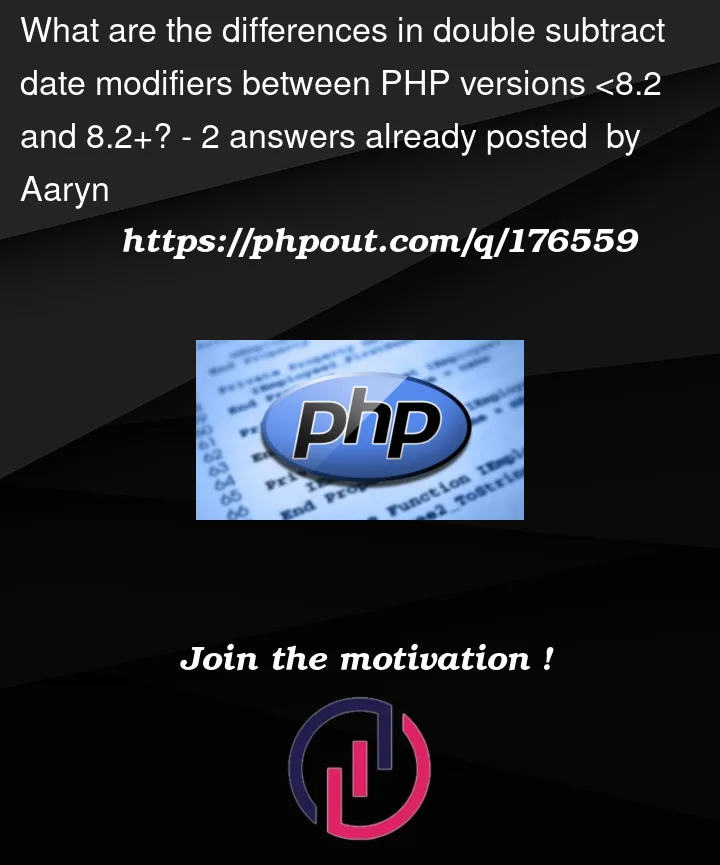I am upgrading a codebase from PHP 7.4 to 8.2. My unit tests picked up an oddity in an area of code that modifies a provided date.
It looks like PHP 8.2 introduced some behaviour with how date functions work when you modify a date using "–" (double arithmetic operators).
public static function getCorrectedTime(
int $year,
int $month,
int $day,
int $index,
string $period
): int {
// PHP 7.4 - if $index=0, $timestamp=1625443200, if $index=-1, $timestamp=1625529600 - test passes
// PHP 8.2 - if $index=0, $timestamp=1625443200, if $index=-1, $timestamp=1625356800 - test fails
$timestamp = strtotime("{$year}-{$month}-{$day} -{$index} {$period}");
return $timestamp;
}
This seems to be the case when using DateTime objects and it’s ->modify() method. It seems like it’s more to do with the double "-" modifier that will be used if $index is a negative number. See scratch pad here: https://3v4l.org/fNR2X
But this method needs to support both positive and negative modifiers being sent to it.
Before I completely refactor this old code, I was trying to hunt down an actual description of the change to PHP 8.2 so I can understand exactly what was changed. I can see nothing about this in the changelog or Google hunt. Is anyone aware?




2
Answers
When you add
$index = -1*$index;to your code, and remove the-in the expressions before the interval:The output is the same in 8.1.2 and 8.2.6
Using sprintf to force the sign for the index would allow you to have a string with either +/- before the days rather than having a — or -…
The important part is the format string
%+d…